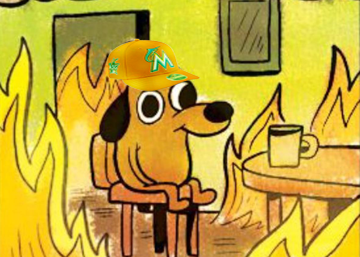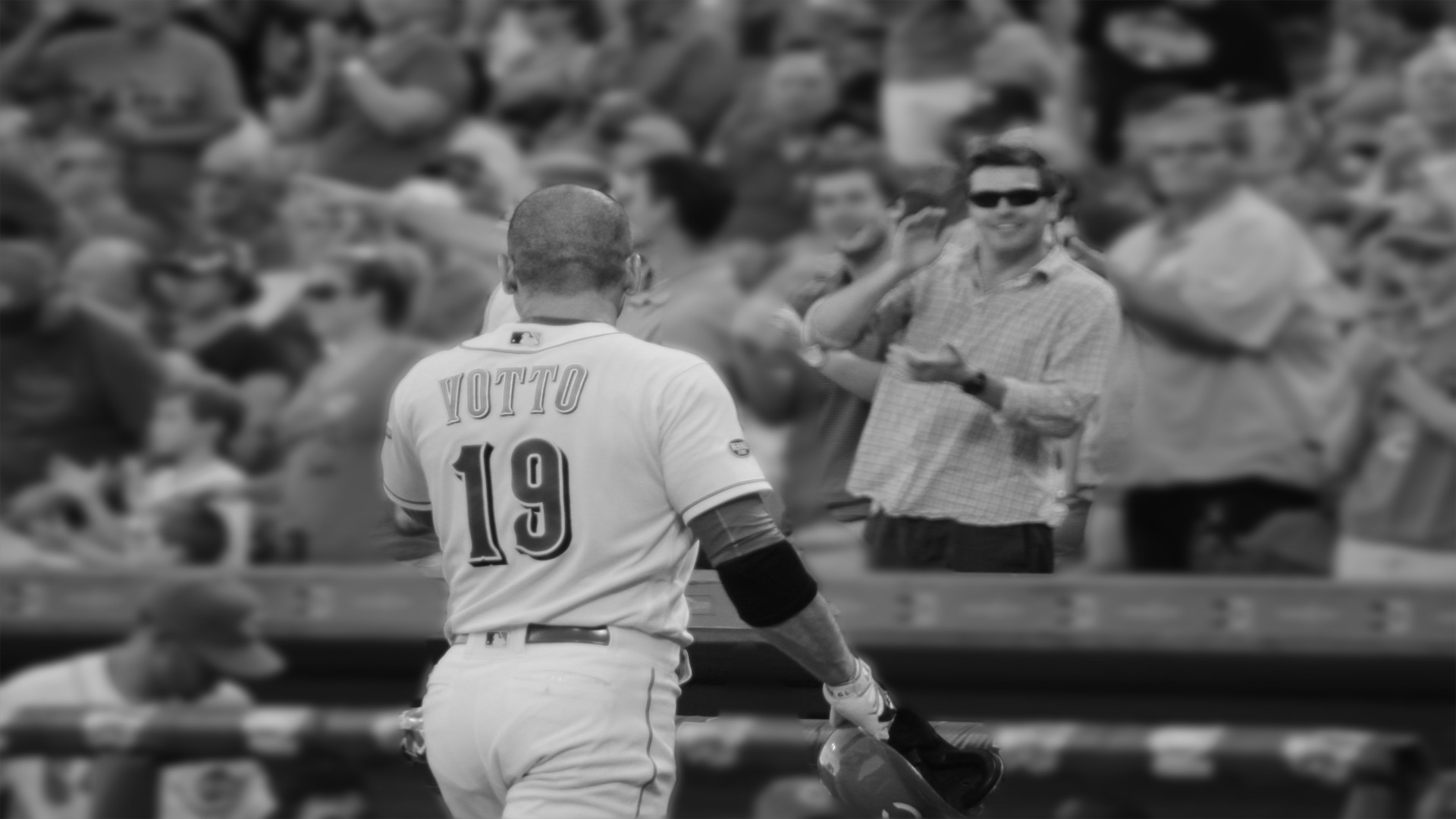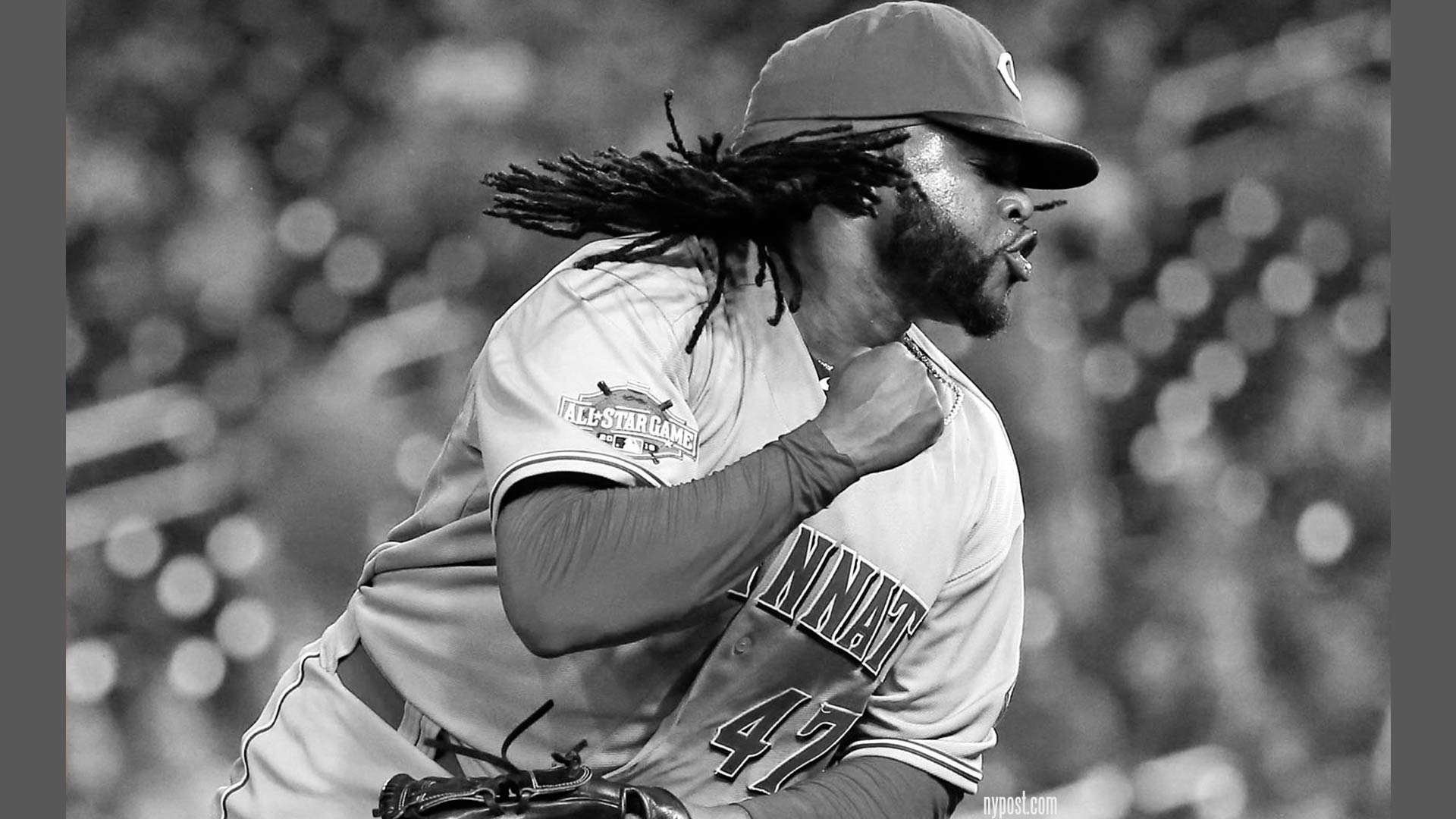Everybody Loves Christian
If Dick Williams was ever on the Marlins front stoop, sporting a newly pressed suit, a fist full of flowers and a fresh haircut, we never heard a whiff of it.
“Nobody goes faster than the legs they have.” ― Alberto Caeiro
“Don’t get out over your skis.” – everyone
Ring the alarum bell. Awake. Shake off this downy sleep, the off-season’s counterfeit and look upon hell itself. Christian “Cost Controlled” Yelich is a Brewer.
This is where we are at now, Reds fans. Breathe deep the gathering gloom. Woe is us. Pitchers and Catchers is just around the desert corner, but there’s thunder in the distance. Or so I’ve heard.
From the moment the Jeter Group hung a giant banner outside Marlins Park proclaiming “EVERYTHING HAS GOT TO GO,” the sharks began circling, looking to swim away with everything but the home run sculpture, which is now the only moving piece left of the 2017 Marlins outfield. I’m thinking Marlin Man is going to be Sad Marlin Man for a long, long time.
The white whale that is the New York Yankees swallowed up fake MVP Giancarlo Stanton. St. Louis speared Marcell Ozuna, leaving Christian Yelich—who could surely smell the gasoline all around him just before Derek Jeter struck the match and sat before the microphones to announce, “This is fine.”

Maybe Yelich WAS the one player ownership wanted to keep. The 7-year, $49.57 million contract Yelich signed meant he will receive $7 million in 2018, $9.75 million in 2019, $12.5 million in 2020 and $14 million in 2021. According to Fangraphs, Yelich was a 4.5 Win Player in 2016 and a 4.5 Win player in 2017. This is the very definition of “cost-controlled.” And, oh yeah, he’s 26. A baby.
But Yelich wanted no part of new ownership’s hazy plan to burn it all down to the ground and start over. If that put the Marlins at a trade disadvantage, that disadvantage was offset by the number of suitors ready to pony up for a young, cheap and valuable baseball player.
If Dick Williams was ever on the Marlins front stoop, sporting a newly pressed suit, a fist full of flowers and a fresh haircut, we never heard a whiff of it. There’s a good portion of the fan base that thinks the Reds should have paid full price and then some to put Yelich in Pantone 200 Red. But, the Reds time is not now.
Repeat after me: THE REDS TIME IS NOT NOW. I know. This hurts. We’ve had all of last season to process this.
It could have been now, but in 2017, Anthony DeSclafani never made it out of the gate, Brandon Finnegan was a victim of some hellish fate, and Homer Bailey was simply too late. Cody Reed failed to progress. Robert Stephenson’s development didn’t get going until late in the season. The two big surprises—Luis Castillo and Sal Romano—are still diamonds in the rough until proven otherwise. Until the Reds get a handle on their starting rotation, they shouldn’t be trading away pitching prospects they most assuredly will need down the road. In case you hadn’t noticed: pitchers get hurt.
None of this means the Reds can’t have a surprising season and make a run. It’s just that the path is strewn with many goblins along the primrose path.
But if you can’t let go of the image of Yelich gabbing post game with Jim Day, remember that the cost was likely higher than the moon. I was always convinced the Marlins front office wanted nothing less than an organization’s top prospect as part of a larger package in return for Yelich. If anyone has forgotten how badly the Reds fleeced Miami in the Straily/Castillo trade, you can bet Jeter hasn’t. It’s difficult not to believe they were going to want as much or more from the Reds than they got from the Brewers (or anybody else) if for no other reason than to just take some of the sting out of that deal.
Including Senzel in any deal would have been robbing Peter to pay Paul. Relinquishing Hunter Greene would have been the Rebuild’s unconditional surrender. Why? The selection of Hunter Greene last summer was a gutsy move by a usually risk-averse franchise. By pushing so many chips to the center of the table, the Reds weren’t just hoping for the next Johnny Cueto—they were looking to find the kind of starter who can leave his mark on a franchise forever. The Mets had Tom Seaver. The Dodgers had Sandy Koufax. The Cardinals had Bob Gibson. The Phillies—Steve Carlton. With all due respect to Jim Maloney and the aforementioned Cueto, the Cincinnati Reds have never had that ONE historically great starting pitcher, the kind of inner circle Hall of Famer whose mere presence on the mound engenders hopelessness sixty feet away.
No, our Cincinnati Reds have got to stick to the plan. Cashing in the likes of Taylor Trammell, Tyler Mahle and Amir Garrett now would be running faster than their legs can carry them into a foggy and uncertain future where injury and regression can undo everything the last two and a half years have been about.
Above all, hope that the Reds do get out over their skis and stay there. Leaning into the slope ahead, trusting the process, is what allows the skier to effectively use the edges of the skis to carve and turn, control the speed of the action and change course when necessary. Looking down and leaning into the fall line is scary. As the Reds’ front office looks down the mountain of this rebuild, the temptation to fall back, to fail to fully commit to the steep trail ahead—one they have marked so carefully for two full years—is to ski off course, not just into the trees, but into a forest of failure that could leave them lost for a decade.
Yes, Hunter Greene is full of risk. All prospects are. But this is how all teams that are also not corporations are made these days. Yelich is as close to a sure thing as there is, barring future injury. But for the Reds to be more than just fringe contenders making a two or three 87-win Wild Card appearances before bowing out in the face of the juggernaut Cubs or the monied Dodgers, the home boys must to find and develop generational pitching talent. To lose a phenom pitching prospect to injury is one thing. To lose an expensive free agent pitcher to injury is death to small market franchises who cannot bury their mistakes with dollar bills. Developing pitching from within is the Reds’ path to a deep post-season run.
The alternative is to suffer the fate of the Pittsburgh Pirates: average 93 wins a season between 2013-2015; and be Wild Card bridesmaids. Or the New York Mets, who had all the pitching in the world until suddenly they didn’t.
Trust the process. Or as Lady MacBeth said, “screw your courage to the sticking place and we’ll not fail.”







1 Comment
Hello. I see that you don’t update your blog too often. I know that writing content
is boring and time consuming. But did you know that there is a tool that allows you to create new
posts using existing content (from article directories or other pages from your niche)?
And it does it very well. The new posts are unique and pass the copyscape test.
July 27, 2018 at 4:53 amYou should try miftolo’s tools